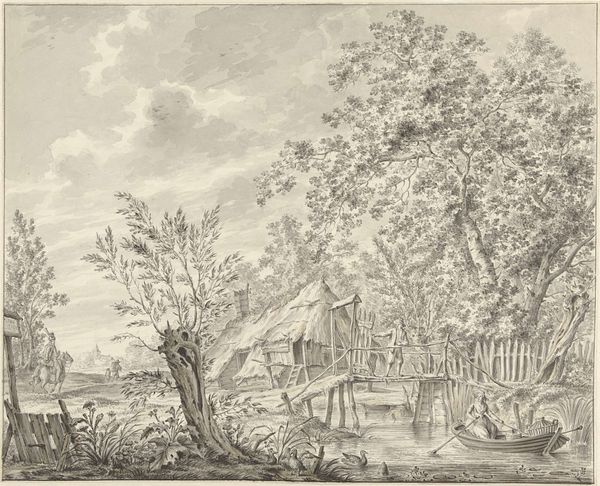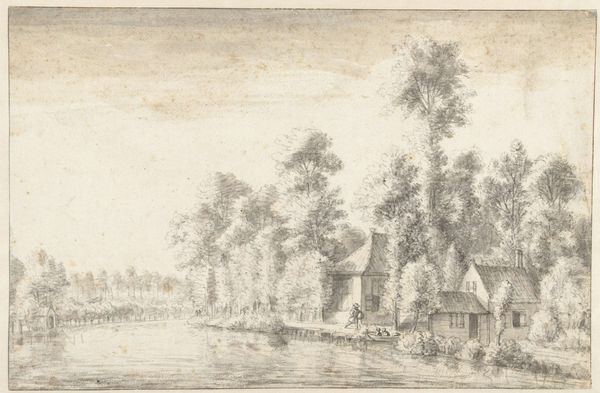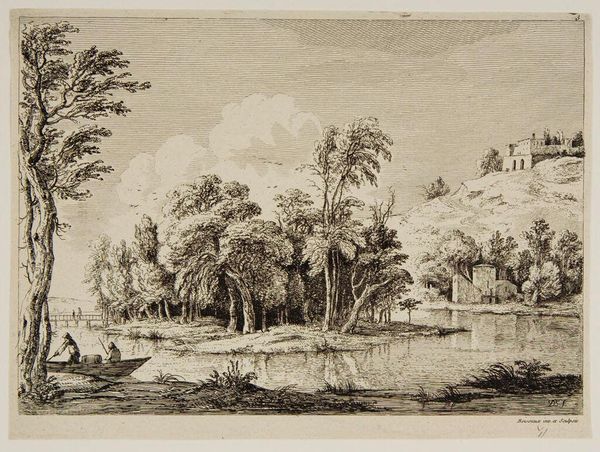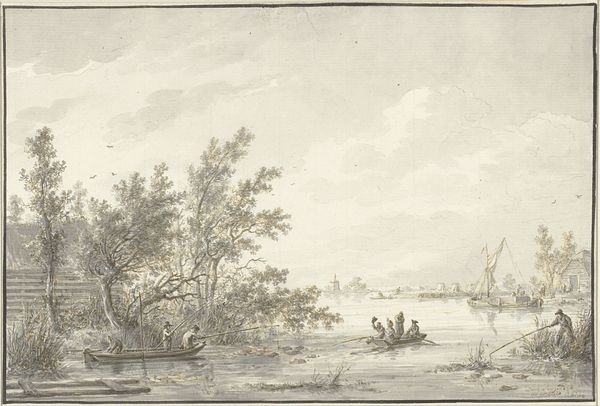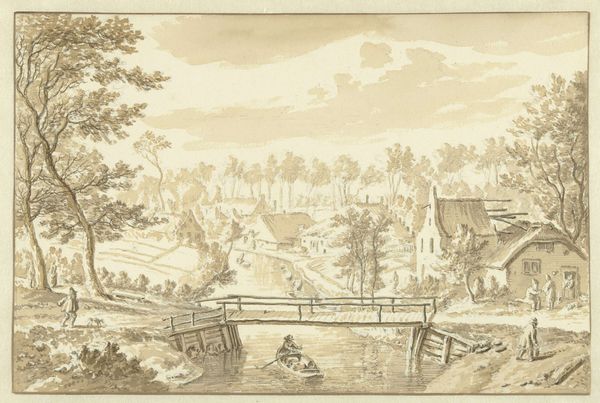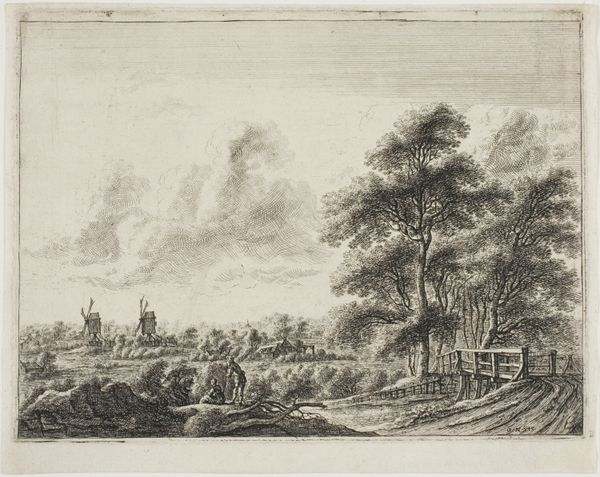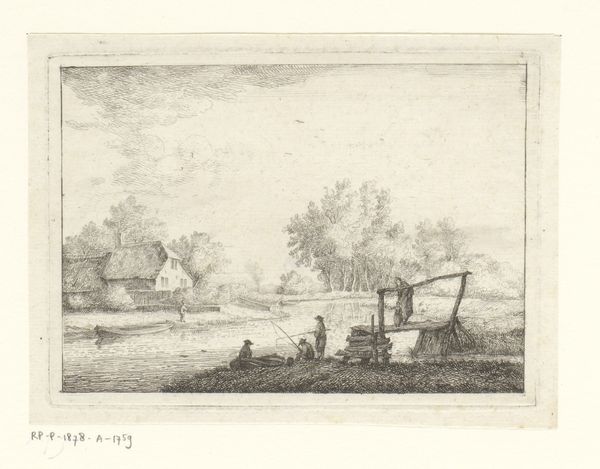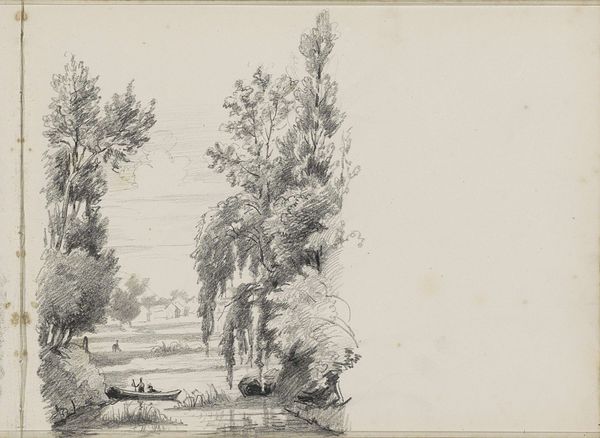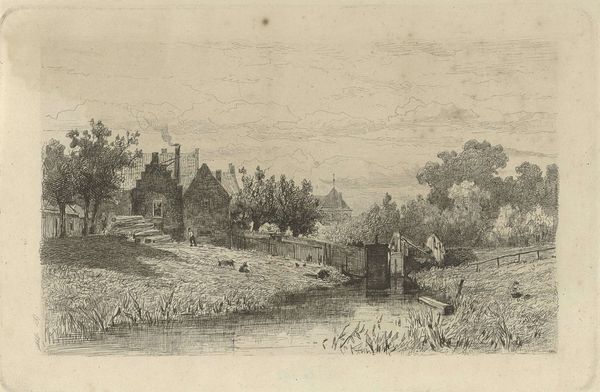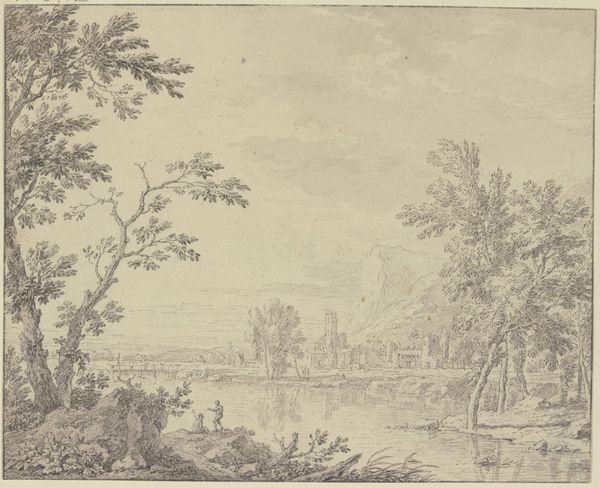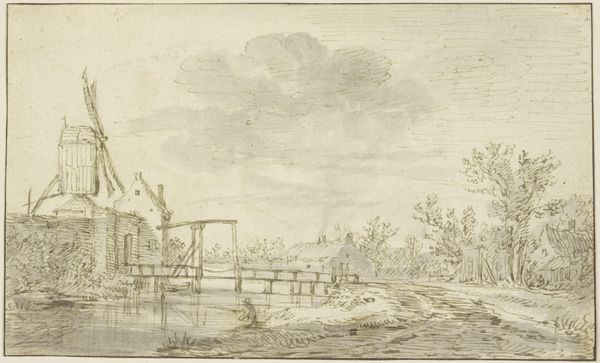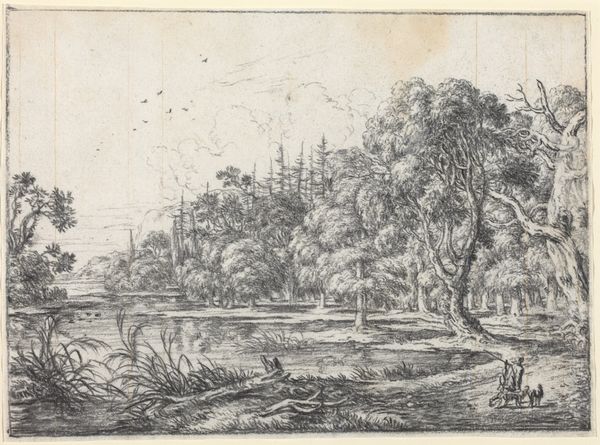
View Over the Leine near Gottingan Toward Rosdorf Warte n.d.
0:00
0:00
drawing, print, paper, ink, pencil, chalk, graphite
#
drawing
# print
#
pencil sketch
#
landscape
#
charcoal drawing
#
paper
#
charcoal art
#
ink
#
pencil drawing
#
pencil
#
chalk
#
line
#
graphite
Dimensions: 134 × 195 mm
Copyright: Public Domain
Editor: This is "View Over the Leine near Gottingan Toward Rosdorf Warte," and it's attributed to an anonymous artist. It looks like it's rendered in pencil, ink, graphite, chalk and other drawing media on paper. The sepia tones give it a wistful quality. What do you see in this piece? Curator: I see a landscape seemingly devoid of any overt political message. However, that absence is telling. We must ask, whose landscape is this? Who is allowed to occupy and represent this space? Look at the figures included: what is their relationship to the land, and what narratives are being centered by their presence? Editor: That's an interesting perspective! I hadn't thought about it in terms of representation. So, you're saying the artist's choice to include those particular figures - like the figures near the stream or the fisherman, implies a certain viewpoint? Curator: Precisely. Who benefits from this serene depiction? Is it a celebration of pastoral life accessible to all, or does it reinforce a hierarchy of land ownership and access? Consider the historical context. Were there marginalized communities displaced or excluded from this "view"? Whose labor made this scene possible, and why are they absent from the composition? Editor: I guess I assumed landscape art was mostly objective. Curator: It is rarely, if ever, objective. Art is a product of its time and place, and always carries a worldview. By critically examining whose stories are being told, and whose are being omitted, we can understand art's role in shaping societal values. Who is given visibility? And who remains unseen? Editor: I see. The choice to idealize this particular scene might serve to erase the struggles of the people who actually lived and worked there. That's… sobering. Curator: Exactly. This work, on the surface, is gentle, but provokes reflection on historical narrative. Editor: That completely changed how I see landscape art. Thanks for pointing that out!
Comments
No comments
Be the first to comment and join the conversation on the ultimate creative platform.
